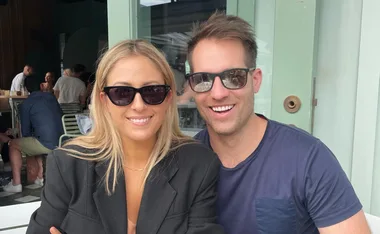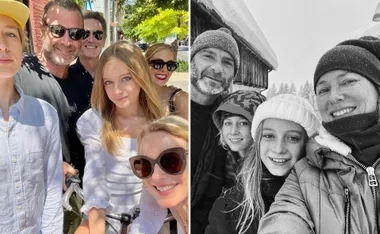In the wake of the tragic death of home birth advocate Caroline Lovell, a mother of eight home-born babies and one who chose to have a caesarean section discuss their birth experiences.
The case for hospital births
Emma Macdonald, journalist and mother of two, who elected to have a caesarean for her second birth.
The sagest advice any expectant mother will receive from another mother is to not try and plan the birth. For all the visions of aromatherapy candles, warm bathwater, classical music and the serene arrival of a newborn into the world, most honest mums will admit you can’t plan for a thing. And whatever you need to do to get through it will be okay.
Related: Home birth death stirs up mixed emotions
For a growing number of Australian women, however, they are able to plan their births with as much certainty as possible — they are electing to have a caesarean.
In my case, a difficult-to-manage case of gestational diabetes led me to shelve ideas of a natural birth six years ago as my baby and belly grew at an unwieldy pace. I remember feeling a vague sense of disappointment — mainly because I believed a caesarean would take weeks to recover from.
But I also felt a little relieved. I did not know how I would cope with the pain of birth and my research into gestational diabetes suggested I might not succeed in bringing a large baby into the world in any event. While some women might have opted to “give it a go”, I thought an attempt at a traumatic and ultimately futile labour only to end up having an emergency caesarean would be the worst of both worlds. My obstetrician remained neutral — rather maddeningly so at times! Wherever I went, he would follow.
My divine son arrived in the world at 3.8kg, two weeks ahead of schedule via a routine and relatively pain-free caesarean in a brightly lit operating theatre full of medical professionals. For me it was perfect.
My husband and I are grateful beyond words that I had every option and every backup available during my delivery. I have friends for whom, tragically, this has not been the case.
With my second pregnancy I did not have gestational diabetes, but I elected to have another caesarean. Both births were nothing short of joyous and positive events and I was up and about after a couple of days.
If there has been a downside to the experience, it is the judgement I have felt from some other mothers.
They believe I have missed out on the “empowerment” of a natural birth. They see caesarean as an unnatural intervention. They sometimes even believe a woman who has a caesarean might choose not to breastfeed. My daughter follows her brother in being a voracious breastfeeder — clearly bucking this assumption.
How to give birth is an intensely personal decision and should not be judged. To each her own. In my case, empowerment came through having a choice. And I did what I needed to do to get through it okay.
Emma is one of the National Association of Obstetricians and Gynaecologists’ safe birth ambassadors.
The case for home births
Justine Caines, spokeswoman for Homebirth Australia and mother of eight children, all born in her home.
Choosing to give birth at home was about giving me and my baby the best chance of a healthy and intervention-free birth. I was open to medical care if necessary. My experience with friends was that many interventions were not based on need. Some of my friends suffered after surgery and I did not want this to happen to me.
I was healthy and highly regarded wellness. I found it contradictory that during pregnancy women took little more than Panadol and yet during labour harmful narcotics are considered normal.
I decided I would not create a drama out of pregnancy and birth. I wanted to be well and strong for the mammoth job of parenting. I saw photos of women who gave birth at home and the glow on their face was amazing.
I trained my mind and reinforced that I was capable of doing this and would be rewarded.
My first labour was long and hard, very similar to other women; the difference was the amazing support I received during pregnancy and labour. I got to know my midwife well. We had long visits where she answered our questions, and provided excellent clinical support. She gave us all the information and then told us we needed to make decisions that were right for us.
I relished this freedom feeling powerful and beautiful during later pregnancy. My midwife supported me beautifully during the long labour, she also reassured my husband and mother. By the end of the pregnancy we knew our midwife well and trusted her implicitly. There were no strangers, our birth was intimate, and I believe this environment enabled me to give birth, to let go, and ride the ‘roller-coaster’.
I could not have achieved this in a foreign environment with bright lights, strangers, time limits and restrictions.
Homebirth initially was about staying well. I was able to achieve this and moments after the birth of our first child I said the experience was ‘awesome’. Subsequently it became about emotional support and staying together as a family.
Homebirth provided me with a relationship and considerable support from one midwife. This in turn created a high level of clinical safety. My midwife watched my labour closely and would have recognised any abnormalities early on.
Related: My battle with post-natal depression
She also carried emergency drugs for blood loss and oxygen for resuscitation. None of this was required. Some say I was lucky, I argue that I helped create the safety by good management. I maximised my health and it made all the difference. I entered motherhood feeling like I’d run a marathon and the beautiful healthy baby in my arms was the prize for winning. I pushed my body but came out stronger, with a glow just like the woman in the photo.
Homebirth Australia is a lobby group that encourages women to consider home birth as an alternative to hospital birth for a more natural experience.
Your say: Do you think women should be “judged” for choosing to have a caesarean instead of a natural birth?
Video: Investigating silent births





.png?resize=380%2C285)





